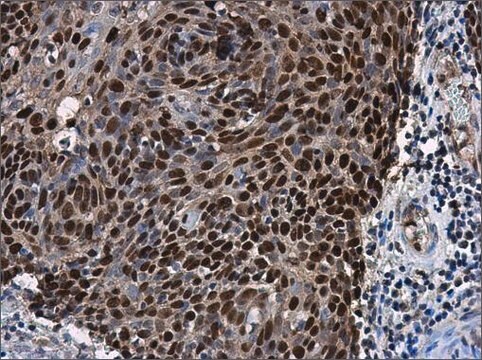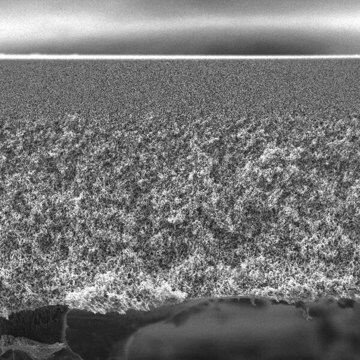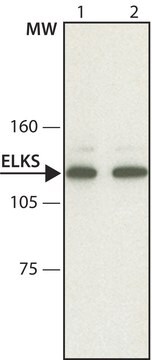MABN72
Anti-DLG4 Antibody
mouse monoclonal, K28/86
Synonym(s):
discs, large homolog 4 (Drosophila), discs large homolog 4, disks large homolog 4, Tax interaction protein 15, post-synaptic density protein 95, Postsynaptic density protein 95, Synapse-associated protein 90
About This Item
Recommended Products
Product Name
Anti-pan-MAGUK Antibody, clone K28/86, clone K28/86, from mouse
biological source
mouse
Quality Level
antibody form
purified immunoglobulin
antibody product type
primary antibodies
clone
K28/86, monoclonal
species reactivity
rat
species reactivity (predicted by homology)
human (immunogen homology), mouse (based on 100% sequence homology)
technique(s)
immunohistochemistry: suitable
immunoprecipitation (IP): suitable
western blot: suitable
isotype
IgG1λ
NCBI accession no.
UniProt accession no.
shipped in
wet ice
target post-translational modification
unmodified
Gene Information
human ... DLG4(1742)
General description
Specificity
Immunogen
Application
Immunoprecipitation Analysis: A previous lot of this antibody was successfully used by an independent laboratory in IP. (Rasband, M., et al. (2002). The Journal of Cell Biology. 159(4):663–672.)
Neuroscience
Signaling Neuroscience
Quality
Western Blot Analysis: 0.5 µg/mL of this antibody detected members of the MAGUK protein family on 10 µg of rat brain tissue lysate.
Target description
Physical form
Storage and Stability
Analysis Note
Rat brain tissue lysate
Other Notes
Disclaimer
Not finding the right product?
Try our Product Selector Tool.
recommended
Storage Class Code
12 - Non Combustible Liquids
WGK
WGK 1
Flash Point(F)
Not applicable
Flash Point(C)
Not applicable
Regulatory Listings
Regulatory Listings are mainly provided for chemical products. Only limited information can be provided here for non-chemical products. No entry means none of the components are listed. It is the user’s obligation to ensure the safe and legal use of the product.
JAN Code
MABN72:
Certificates of Analysis (COA)
Search for Certificates of Analysis (COA) by entering the products Lot/Batch Number. Lot and Batch Numbers can be found on a product’s label following the words ‘Lot’ or ‘Batch’.
Already Own This Product?
Find documentation for the products that you have recently purchased in the Document Library.
Our team of scientists has experience in all areas of research including Life Science, Material Science, Chemical Synthesis, Chromatography, Analytical and many others.
Contact Technical Service





